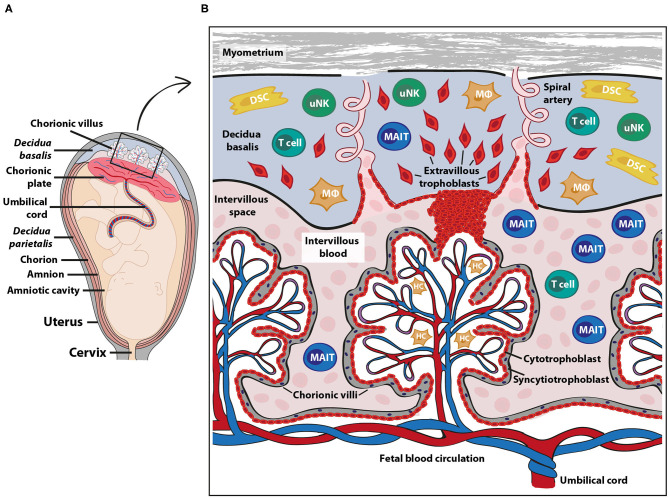Figure 1.
Fetal-maternal interface and immune cells at term pregnancy. The placenta serves to ensure exchange of nutrients and gases between the maternal and fetal blood circulation. The fetal part of the fetal-maternal interface consists of chorionic villi that extend from the chorionic plate (A) into the intervillous space and bathe in maternal intervillous blood (B). On the maternal side, the decidua parietalis and decidua basalis are in direct contact with fetal membranes (amniochorion) and the invading fetal extravillous trophoblasts, respectively (A). The intervillous blood enters the intervillous space through spiral arteries (B) and leaves this compartment through uterine veins (not shown). Maternal immune cells in the intervillous blood are in direct contact with the fetal syncytiotrophoblast and decidual immune cells can interact with extravillous trophoblasts (B). DSC, decidual stromal cells; HC, Hofbauer cells (fetal macrophages); MAIT, mucosal associated invariant T cells; MΦ, macrophages; uNK, uterine natural killer cells. The pink cells in the intervillous space depict erythrocytes.

